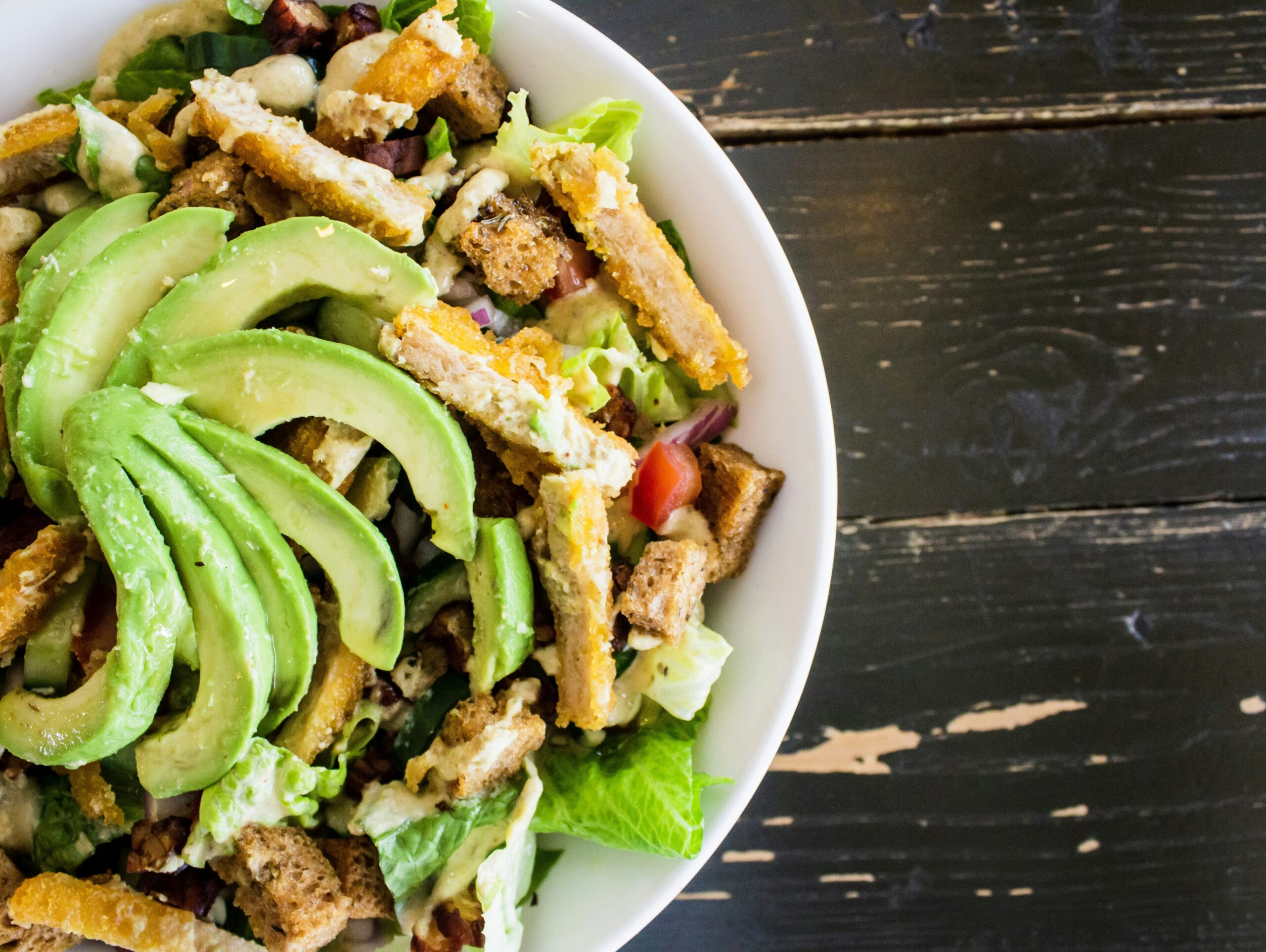Are you curious about how many carbs you can have while following the keto diet? Well, look no further! This article provides a clear and concise answer to that very question. Whether you’re a seasoned keto dieter or just starting out, understanding the right carbohydrate intake is crucial for achieving and maintaining ketosis. So let’s explore the optimal amount of carbs you can have on the keto diet and discover how it can help you reach your health and weight loss goals.
Understanding the Keto Diet
The keto diet has gained significant popularity in recent years as a way to promote weight loss and improve overall health. But what exactly is the keto diet? In simple terms, it is a low-carbohydrate, high-fat diet that encourages the body to enter a state of ketosis. By drastically reducing your carbohydrate intake and increasing your intake of healthy fats, the idea is to shift your body’s primary source of energy from carbohydrates to fats.
Defining the keto diet
The term “keto” is short for ketosis, which is a metabolic state where your body uses fat as its main fuel source instead of glucose derived from carbohydrates. In order to achieve ketosis, you need to limit your carb intake to a specific threshold, which varies from person to person. By doing so, your body switches from using glucose to using ketones, which are produced by the liver when it breaks down fat. This metabolic shift can have various effects on your health and well-being.
Principles behind the keto diet
The keto diet is based on the principle that when you reduce your carb intake, your body is forced to find an alternative source of energy. By decreasing the availability of carbohydrates, which are usually broken down into glucose for energy, your body turns to stored fat and dietary fat as an energy source. This allows you to burn fat more efficiently, leading to weight loss. Additionally, when your body is in a state of ketosis, it produces ketones, which are believed to have several health benefits, including increased mental clarity and improved insulin sensitivity.
Potential benefits of the keto diet
There are several potential benefits associated with following a keto diet. One of the main reasons people turn to the keto diet is for weight loss. By reducing your carb intake and increasing your fat intake, your body becomes more efficient at burning stored fat for energy, resulting in weight loss. Additionally, the keto diet has been shown to help control blood sugar levels and improve insulin sensitivity, making it beneficial for individuals with type 2 diabetes or insulin resistance. Some studies have also suggested that the keto diet may have neuroprotective effects and could potentially help with conditions such as epilepsy, Alzheimer’s disease, and Parkinson’s disease.
Carbohydrates and the Keto Diet
Role of carbs in the body
Carbohydrates play a vital role in our bodies as they are the preferred source of energy for many bodily functions. When consumed, carbs are broken down into glucose, which is used by our cells for energy. Carbohydrates also have an impact on insulin levels, the hormone responsible for regulating blood sugar. However, excessive carbohydrate consumption can lead to spikes in blood sugar levels and can contribute to weight gain.
Impact of carbs on ketosis
When it comes to ketosis, carbohydrate intake is crucial. In order to achieve and maintain a state of ketosis, it is necessary to limit your carb intake to a specific threshold. This is because carbohydrates, especially those high in sugars and starches, can elevate blood glucose levels, which triggers the release of insulin. Insulin signals the body to store glucose as glycogen in the liver and muscles. When glycogen stores are full, any excess glucose is converted to fat and stored in adipose tissue. By reducing carb intake, you minimize the release of insulin and promote the breakdown of fat for fuel.
Why reducing carb intake is crucial for the keto diet
Reducing carb intake is crucial for the keto diet because it is the key factor that allows your body to enter a state of ketosis. When you significantly reduce your carb intake, your body depletes its glycogen stores and starts to rely on fat for energy. This metabolic shift is what supports weight loss and the other potential benefits of the keto diet. By limiting carbs, you also prevent spikes in blood sugar levels, which can help regulate insulin levels and improve insulin sensitivity. Ultimately, reducing carb intake is the foundation of the keto diet and is necessary to reap its full benefits.

Determining Carb Limit on Keto
General recommendation for carb intake
While the keto diet is a low-carb diet, the specific carb limit can vary from person to person. However, a general recommendation for carb intake on the keto diet is to consume fewer than 50 grams of net carbs per day. Net carbs refer to the total amount of carbohydrates minus the fiber content, as fiber does not significantly impact blood sugar levels. This carb limit ensures that your body stays in a state of ketosis and relies predominantly on fat for fuel.
Factors determining individual carb limit
Several factors can influence your individual carb limit on the keto diet. These factors include your age, gender, activity level, metabolic rate, and weight loss goals. Generally, individuals who have a higher level of physical activity or who are engaging in intense workouts may tolerate a higher carb limit while still remaining in ketosis. On the other hand, individuals who are sedentary or have specific health conditions may need to adhere to a stricter carb limit to achieve and maintain ketosis.
Importance of personalizing carb intake to individual needs
It is important to remember that the keto diet is not a one-size-fits-all approach. The optimal carb limit for one person may not be the same for another. It is crucial to tailor your carb intake to your individual needs and goals. Tracking your food intake and monitoring your body’s response to different levels of carbs can help you determine your own carb limit. Experimentation and self-awareness are key when personalizing your carb intake on the keto diet.
Calculating Net Carbs
Definition of net carbs
Net carbs are the total amount of carbohydrates in a food item minus the fiber content. Unlike other types of carbohydrates, fiber does not significantly impact blood sugar levels and does not contribute to the total carb count when calculating net carbs. This is because fiber is not digested by our bodies and does not provide calories or raise blood glucose levels. By subtracting fiber from the total carbs, you get the net carb value, which provides a more accurate representation of the carbohydrates that affect ketosis.
How to calculate net carbs
Calculating net carbs is relatively simple. To calculate the net carbs in a food item, you need to subtract the fiber content from the total carbohydrates. For example, if a food item contains 20 grams of total carbs and 7 grams of fiber, the net carb value would be 13 grams (20g total carbs – 7g fiber = 13g net carbs). Most food labels already provide the net carb value, making it easier for individuals following the keto diet to track their carbohydrate intake.
The significance of net carbs in the keto diet
Net carbs are significant in the keto diet because they are the carbs that impact your body’s ability to maintain a state of ketosis. By keeping your net carb intake within your specific threshold, you ensure that your body remains in a state of ketosis and continues to rely on fat for fuel. Tracking net carbs can also help you make informed choices when it comes to selecting food items that align with the principles of the keto diet. By focusing on net carbs, you can prioritize low-carb, high-fiber foods that support ketosis and overall health.

Carb Sources to Focus On
Importance of quality over quantity in carb sources
While the keto diet restricts carb intake, it is important to prioritize the quality of carbs rather than just the quantity. Not all carbs are created equal, and some can have a greater impact on your health and weight loss goals than others. Instead of relying on processed and sugary carbs, it is important to choose nutrient-dense, whole-food sources of carbohydrates that provide additional health benefits. By focusing on quality, you can ensure that you are getting the necessary nutrients while still adhering to the principles of the keto diet.
Recommended carb sources on keto
On the keto diet, it is recommended to primarily obtain your carbs from non-starchy vegetables, such as leafy greens, broccoli, cauliflower, zucchini, and asparagus. These vegetables are low in net carbs and high in fiber and essential nutrients. Additionally, small amounts of low-sugar fruits, such as berries, can be incorporated into the diet. Other healthy sources of carbs on the keto diet include nuts, seeds, and dairy products. These sources offer additional protein, healthy fats, and micronutrients that support overall health and well-being.
Carb sources to avoid on the keto diet
There are certain carb sources that should be avoided on the keto diet due to their high carb content and potential impact on blood sugar levels. Foods such as grains, starchy vegetables, legumes, and most fruits, especially those high in sugar, should be limited or eliminated from your diet. These foods can easily disrupt ketosis and hinder your progress on the keto diet. It is important to read food labels and be mindful of hidden carbs in sauces, condiments, and processed foods, as they can contribute to your carb count without you realizing it.
Transitioning to a Low-Carb Diet
Challenges of reducing carb intake
Transitioning to a low-carb diet, such as the keto diet, can present certain challenges. One of the main challenges is adjusting to a significant reduction in carbohydrate intake, especially if you are used to consuming a carb-heavy diet. Common challenges include cravings for high-carb foods, energy fluctuations, and potential side effects such as the “keto flu.” It is important to be prepared for these challenges and have strategies in place to overcome them.
Tips for a smooth transition
To make the transition to a low-carb diet smoother, it is helpful to plan and prepare your meals in advance. This can ensure that you have keto-friendly options readily available and reduce the temptation to reach for high-carb foods. Gradually reducing your carb intake instead of cutting them out completely can also make the transition more manageable. Additionally, experimenting with different flavors, spices, and cooking techniques can help make low-carb meals more enjoyable. It is also essential to stay hydrated, as adequate water intake can help minimize the symptoms of the keto flu.
Coping with side effects of carb reduction
Reducing carb intake can lead to side effects commonly known as the “keto flu.” These side effects can include fatigue, headaches, dizziness, irritability, and muscle cramps. They usually occur during the first few days or weeks of transitioning to a low-carb diet and are a result of your body adjusting to a new energy source. To cope with these side effects, it is important to prioritize electrolyte balance by increasing your intake of minerals such as sodium, potassium, and magnesium. Drinking bone broth, adding salt to your meals, and incorporating magnesium-rich foods can help alleviate symptoms. Additionally, getting enough rest and practicing stress-management techniques can support your overall well-being during the transition phase.

Monitoring Your Progress
How to track your carb intake
To effectively follow the keto diet, it is important to track your carb intake. This can be done through various methods, including using smartphone apps, food diaries, or online nutrition trackers. These tools allow you to log your meals and calculate the nutrient composition of each food item, including the net carb value. By consistently tracking your carb intake, you can monitor your progress and make adjustments as needed to maintain ketosis.
Utilising weight loss and medical tests to measure progress
In addition to tracking your carb intake, monitoring your weight loss progress and considering medical tests can provide valuable insight into the effectiveness of your keto diet. Regularly weighing yourself and measuring your body composition can help you track changes in body fat percentage and overall weight loss. Additionally, consulting with a healthcare professional to measure metrics such as blood sugar levels, lipid profiles, and ketone levels can provide a comprehensive picture of your health and progress on the keto diet.
Adjusting your diet based on outcomes
Monitoring your progress on the keto diet allows you to make adjustments as needed to optimize your results. For example, if you are not achieving or maintaining ketosis, you may need to further reduce your carb intake. On the other hand, if you are experiencing energy fluctuations or intense cravings, you may need to slightly increase your carb intake to find a balance that works for your body. By staying mindful of your progress and listening to your body’s needs, you can make informed decisions about adjusting your diet to achieve long-term success on the keto diet.
Incorporating Exercise into Your Keto Diet
Exercise’s role in carb usage
Exercise plays a crucial role in the keto diet, as it can influence the way your body uses carbohydrates for fuel. During exercise, your body relies on glycogen stores for immediate energy. When following the keto diet, glycogen stores are often depleted due to the low carb intake. As a result, your body becomes more efficient at burning fat for fuel, leading to increased fat loss potential during exercise.
Adjusting carb intake to support physical activity
If you are engaging in regular exercise while following the keto diet, it may be necessary to adjust your carb intake to support your physical activity. Intense workouts or prolonged exercise may require a slightly higher carb intake to optimize performance. This can be achieved by strategically timing your carb intake before and after workouts. However, it is important to note that each individual’s carb needs may vary, and finding the right balance between carb intake and exercise is a personal journey that requires experimentation.
Effective exercise strategies on the keto diet
While adjusting to the keto diet, it is important to approach exercise with a realistic mindset. In the initial stages of transitioning to a low-carb diet, you may experience a temporary decrease in exercise performance as your body adapts to using fat as its primary fuel source. During this time, focusing on low- to moderate-intensity workouts, such as walking, cycling, or resistance training, can help maintain muscle mass and support overall fitness. As your body becomes more adapted to using fat for fuel, you can gradually increase the intensity and duration of your workouts. It is important to listen to your body and make adjustments as needed to ensure a safe and effective exercise routine on the keto diet.
Special Considerations and Precautions
Potential risks of the keto diet
While the keto diet can offer various health benefits, it is important to consider the potential risks associated with this dietary approach. Some individuals may experience side effects such as nutrient deficiencies, constipation, increased risk of kidney stones, and elevated cholesterol levels. It is crucial to ensure that you are consuming a well-balanced diet that includes a variety of nutrient-dense foods to mitigate these risks. Additionally, individuals with certain medical conditions, such as pancreatitis or liver disease, may need to avoid or carefully monitor their carb intake on the keto diet. Consulting with a healthcare professional before starting the keto diet can help identify any potential risks or concerns specific to your individual health.
Health conditions that may affect carb limit
Certain health conditions may impact your ability to follow a strict keto diet and may require adjustments to your carb intake. For example, individuals with type 1 diabetes or those taking specific medications may need to closely monitor their blood sugar levels and adapt their diet accordingly. Additionally, individuals with digestive disorders or gallbladder issues may need to limit their intake of high-fat foods. It is important to work closely with a healthcare professional or registered dietitian who can provide personalized guidance based on your specific health conditions.
When to seek medical advice
While the keto diet can be a successful dietary approach for many individuals, it is important to prioritize your health and seek medical advice if needed. If you have any pre-existing medical conditions, are taking medications, or have concerns about the keto diet’s suitability for your individual needs, it is recommended to consult with a healthcare professional. They can provide personalized guidance, monitor your progress, and address any potential adverse effects that may arise from following the keto diet. Your health and well-being should always be the highest priority.
Maintaining Long-Term Success on a Keto Diet
Creating a sustainable keto eating plan
For long-term success on the keto diet, it is important to create a sustainable eating plan that you can maintain over time. Instead of viewing the keto diet as a short-term fix, approach it as a lifestyle change. Focus on incorporating a wide variety of nutrient-dense foods, including vegetables, healthy fats, and high-quality proteins, to ensure you are meeting your nutritional needs. Additionally, finding keto-friendly alternatives for your favorite high-carb foods can help you stick to your eating plan without feeling deprived.
Developing healthy relationships with carbs
While the keto diet restricts carb intake, it is crucial to develop a healthy relationship with carbohydrates. Carbs are not inherently bad, and there are many nutrient-dense carbs that can benefit your overall health. As you progress on your keto journey, it can be helpful to periodically incorporate small amounts of healthy carbs, such as sweet potatoes or quinoa, into your diet. This can help prevent any feelings of deprivation or restrictions and promote a balanced approach to nutrition.
Staying motivated on the low-carb journey
Staying motivated on the low-carb journey can sometimes be challenging, especially when faced with temptations or setbacks. It is important to remind yourself of your goals and reasons for following the keto diet. Setting realistic expectations and focusing on the positive changes you are experiencing, such as increased energy levels or improved mental clarity, can help keep you motivated. Surrounding yourself with a supportive community or finding an accountability partner can also provide encouragement and help keep you on track. Remember that each step forward, no matter how small, is a step in the right direction on your low-carb journey.
In conclusion, understanding the keto diet is essential for anyone considering embarking on this dietary approach. By defining the principles behind the keto diet, exploring the role of carbohydrates, determining individual carb limits, calculating net carbs, and identifying suitable carb sources, you can make informed decisions when transitioning to a low-carb lifestyle. Monitoring your progress, incorporating exercise, considering special precautions, and maintaining long-term success are key aspects to ensure a safe and effective journey on the keto diet. With careful planning, personalized adjustments, and a positive mindset, you can embrace the keto diet as a sustainable way of eating that supports your health and well-being.

